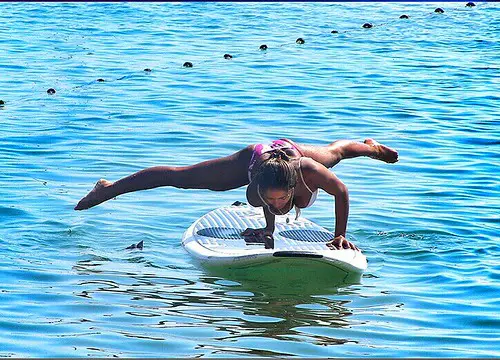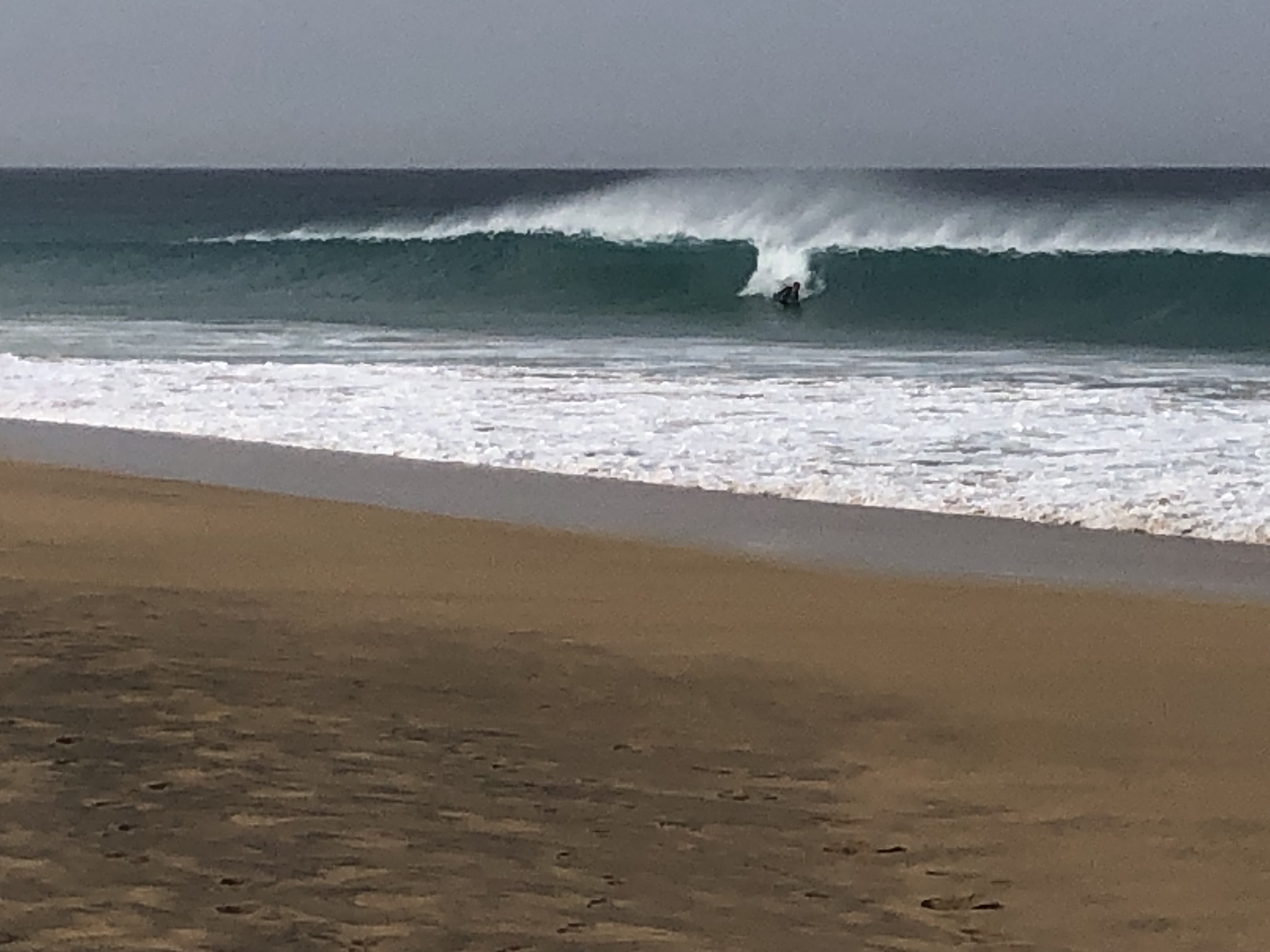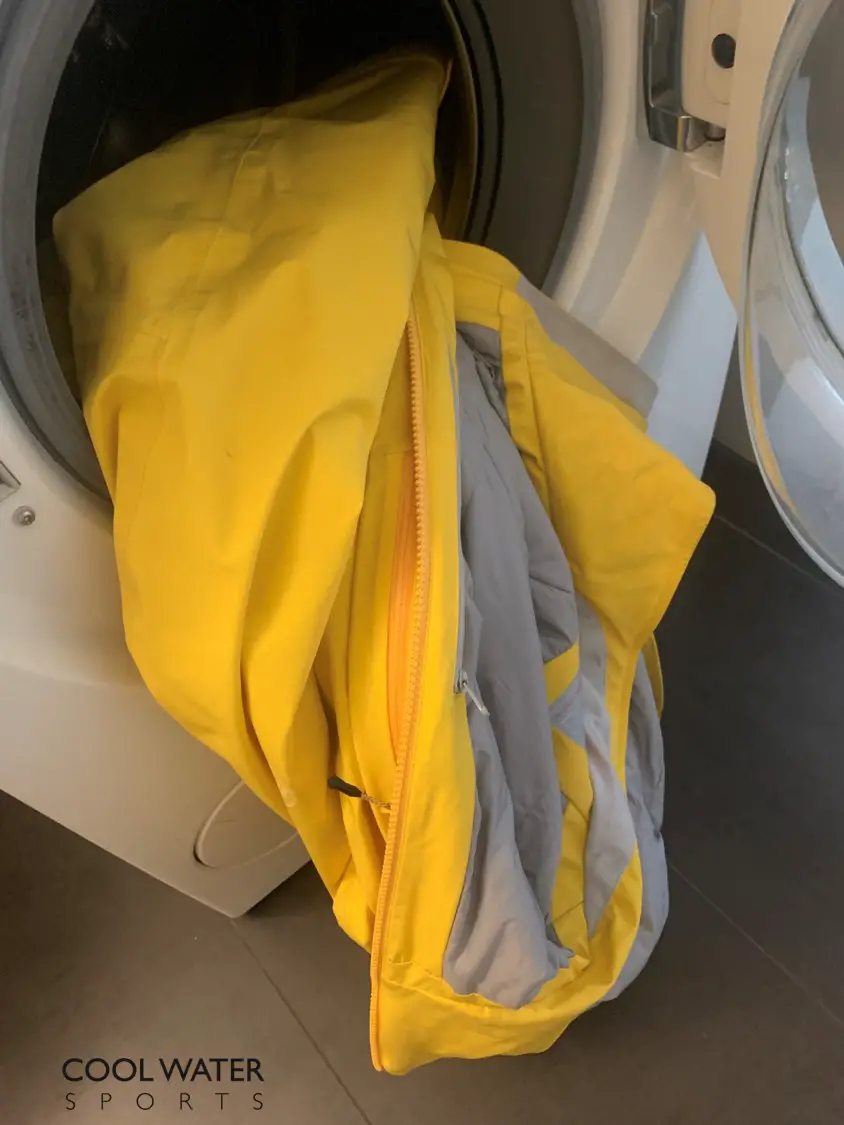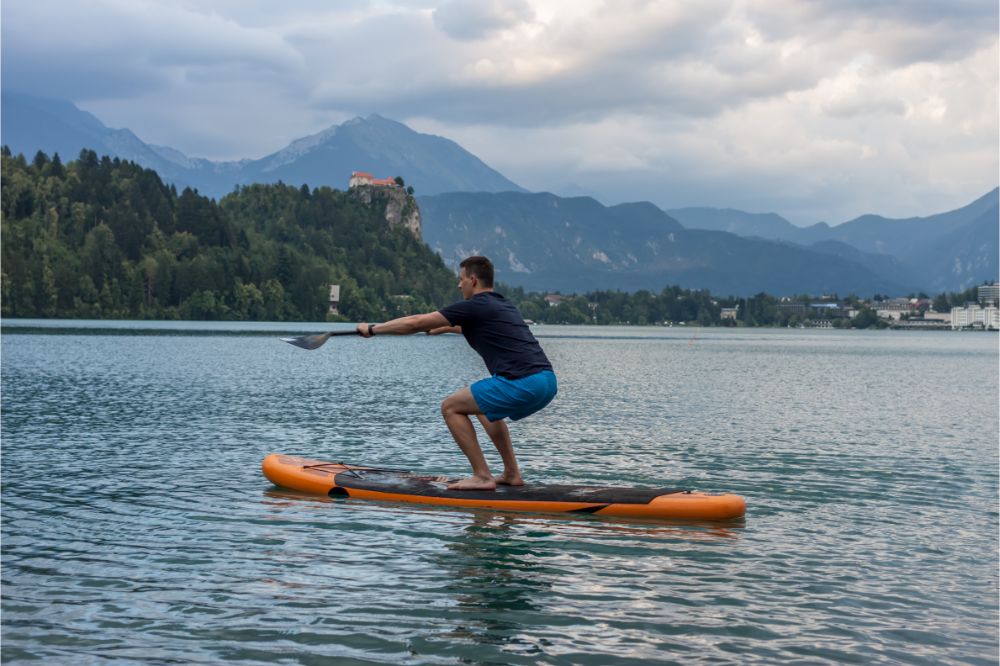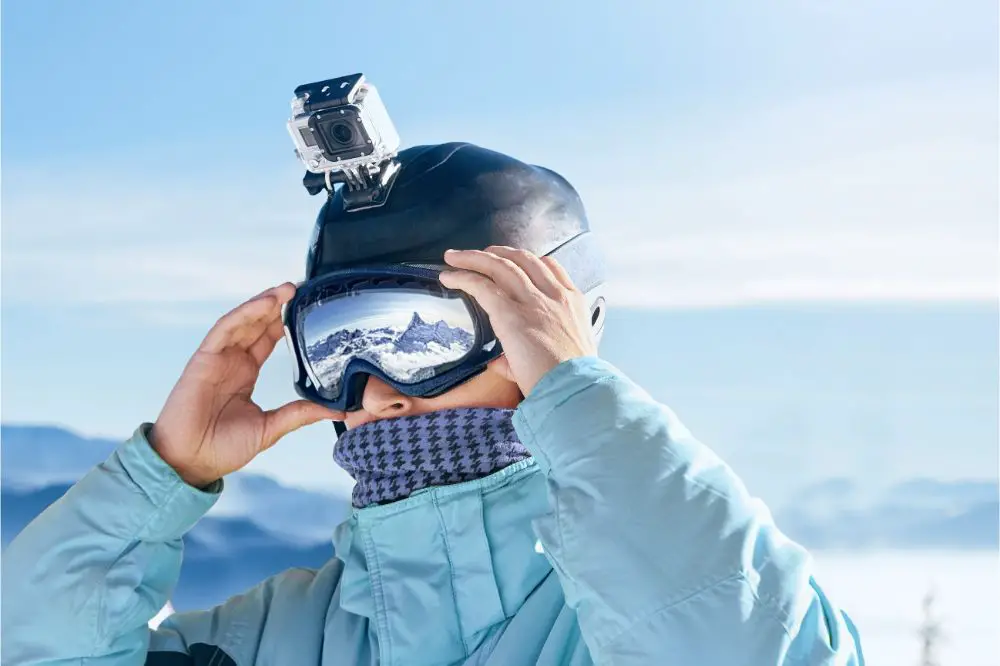SUP is a very popular sport. Not only is it fun, but it also burns a lot of calories with regular workouts.
Stand Up Paddling addresses an extremely large number of different muscle groups, such as the legs, arms, back, torso and shoulders. Good coordination is only possible if they all work together. On the board, your body is permanently under tension, so a practical full-body workout is possible.
However, in this article we show you how effective Stand Up Paddle Fitness really is and how many Calories Stand Up Paddle Boarding burns.

SUP: More than just muscle strengthening
Stand Up Paddling can not only be used to address the muscles, but it is also ideal cardio training. If you get on the board regularly, you can strengthen your breathing and your general condition.
Roughly speaking, you can assume that about 500 to 700 calories are burned per hour of SUP sport.
This value can be compared roughly to what a jogger burns per hour. However, calorie consumption is determined by various factors. The following article describes what SUP is all about and how best to burn fat.
Fun, fitness and burning calories
It is no longer a secret that Stand Up Paddling is a very effective and versatile full-body workout:
The athlete burns fat and strengthens his muscles as well as his cardiovascular system.
By the way, Paddleboarding is also a lot of fun, so that time flies by.
How many Calories Stand Up Paddle Boarding approximately burns…
An adult with a normal build burns about 200 calories per hour simply by standing on the SUP board, as he not only has to stand but always keep his balance.
This means that the mere fact that you are standing on a SUP board when standing and have to keep it straight in the water additionally promotes calorie consumption.
So it is only logical that stand up paddling burns more calories than simply standing on land. Even light currents or small waves require more work from the legs.
As a stand up paddler, you always have to be able to go to your knees easily to be able to balance against all obstacles in the water in the most effective way. In addition, you have to shift your body center of gravity on the board again and again, tensing different muscles. Thus, even the mere act of standing on the board ensures higher calorie consumption than, for example, the above-mentioned standing on land.
But that’s not all. To move with the SUP, as the name suggests, you still have to paddle. As a result, calorie consumption increases even more. How many of these calories are actually burned, however, depends, among other things, on the intensity with which you paddle on the water.
If you paddle very slowly and leisurely, you consume between 300 and 400 calories per hour.
In a real competition, on the other hand, the double or even triple value can be achieved.
A detailed overview and comparison of calories burned in Stand Up Paddle Boarding is shown a little below in this article! Based thereon you can easily calculate the calorie consumption from Stand Up Paddling.
However, it is important to understand the additional value of SUP as it trains a huge amount of muscle groups.
You train these muscle groups with Stand Up Paddling!
If you are still new to the SUP sport, are recovering from an injury, or you just want to progress slowly on the board and relax, you can still burn calories. Slow paddling consumes at least about 300 calories per hour. This value refers to shallow and calm waters. When paddling on turbulent rivers or lakes, stand up paddling calorie consumption naturally continues to increase. But, in addition to the pure calorie consumption, stand up paddling has other advantages:
In SUP, various muscle groups are trained simultaneously and very naturally. SUP is therefore an ideal full-body workout!
Thus, the following muscle groups are worked in SUP:
- Shoulder
- Back
- Trunk
- Buttocks and
- Legs
- Arms
Of course, the different types of SUP (touring, cruising, wave, yoga, etc.) also work the different muscle groups differently. Nevertheless, it is not an exaggeration to say that Stand Up Paddling is one of the most comprehensive and balanced fitness workouts that can be performed.
Calculate Calorie Consumption from Stand Up Paddling: Why is Stand Up Paddle Calorie Consumption So High?
The reasons why stand up paddling consumes so many calories have already been mentioned above
- First and foremost, the constant body tension is responsible:
You need it to achieve a good balance on the water. - In addition, more calories are burned by strong paddle strokes. It is therefore absolutely logical that, the more paddle moves are carried out each time, the more intensive the workout and the more comprehensive the calorie consumption become. This allows you also to control the intensity of the workout, similar to jogging, for instance, by the speed of your paddling. This makes it possible to operate in the different Training Zones (from basic endurance to peak range).
The comprehensive full-body workout further helps to build balanced muscle.
This leads to another positive effect:
those who work out regularly and thus build muscle mass accordingly increase their base metabolic rate of calories (i.e. the calorie requirement that the body has at rest).
You can assume that roughly one additional kilogram of muscle mass increases the daily requirement by about 15 calories. So if you really want to lose weight, you should go on the water with your board regularly. Not only is your calorie consumption of stand up paddling as high as possible, but it also increases during breaks.
Paddleboarding is more effective than working out in the gym!
Even though many athletes certainly don’t believe it, stand up padding is even more effective than working out in a gym when done correctly and regularly. In addition, it has many advantages that cannot be achieved as easily in a closed hall:
SUP takes place in the great outdoors, can even have a meditative effect, and is perfect for stress relief.
Thus, this sport is also suitable for people who have stressful everyday lives and want to work out in the afternoon or evening in the fresh air. In contrast to training in the gym, a workout on the board is also much gentler on the joints, muscles and tendons, because no additional weights are used.
How the different types of SUP affect the Intensity of your Stand Up Paddle Board Fitness Training!
We have already briefly mentioned above that there are different types of Stand Up Paddling. Different movements are performed, and calorie consumption also varies.
The following is important to note: the information below is always approximate. As already mentioned above, calorie requirements depend on various factors:
- Intensity of workout
- Physical constitution of the athlete
- Sex
- Weight and height of the athlete
- Base metabolic rate of the person
Here is an overview of the approximate calorie consumption of the different types of SUP compared to other sports:
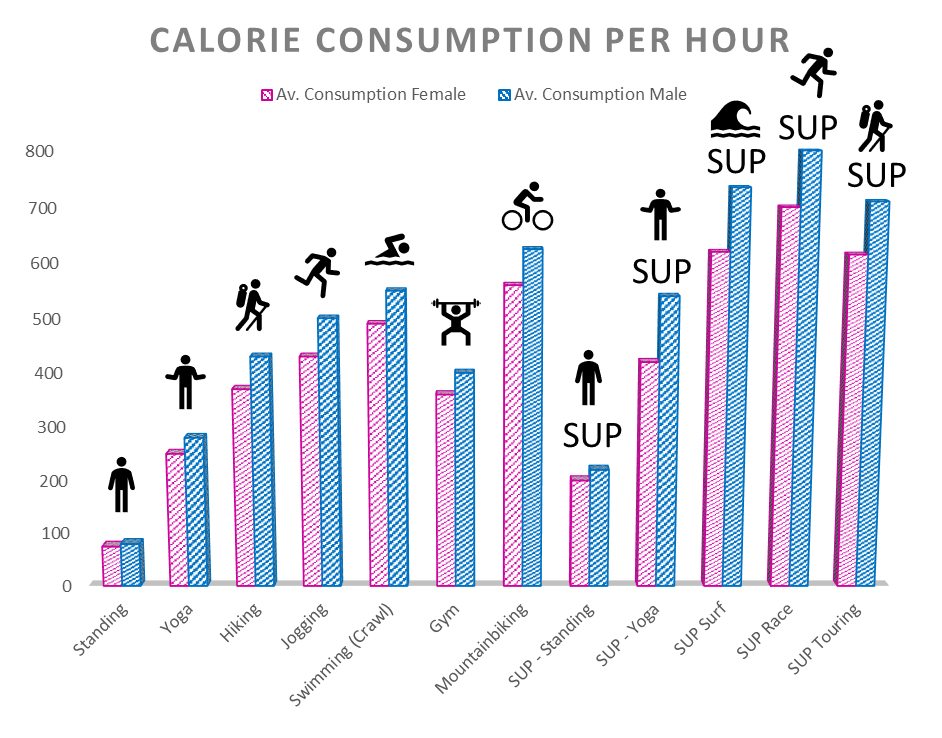
1. SUP-Yoga

SUP yoga is certainly the most relaxed way of stand up paddling. However, this does not mean that a lot of stand up paddle calories are not burned. Yoga on the water ensures strong core muscles and the rocking movement activates muscles that do not play a role in normal yoga. In the SUP variant, the deeper muscle groups can also be addressed in order to always keep the right balance in the individual exercises.
Stand Up Paddling yoga burns between 400 and 540 calories per hour.
Compared to the almost 300 calories per hour of normal yoga, this is a very good value.
2. Surf SUP-Paddling

Much faster than yoga is the so-called surf SUP or wave stand up paddling. As the name suggests, this is a mixture of normal paddling and surfing. Depending on skill and experience, small to large waves can be mastered. It is clear that surfing in waves requires even more coordination, balance, and strength than calm stand up paddling in shallow water. Of course, this also increases calorie consumption.
Wave SUP consumes about 620 – 735 calories per hour!
Also here various factors also play a role here, including how large and intense the waves being surfed are.
3. Race SUP-Paddling
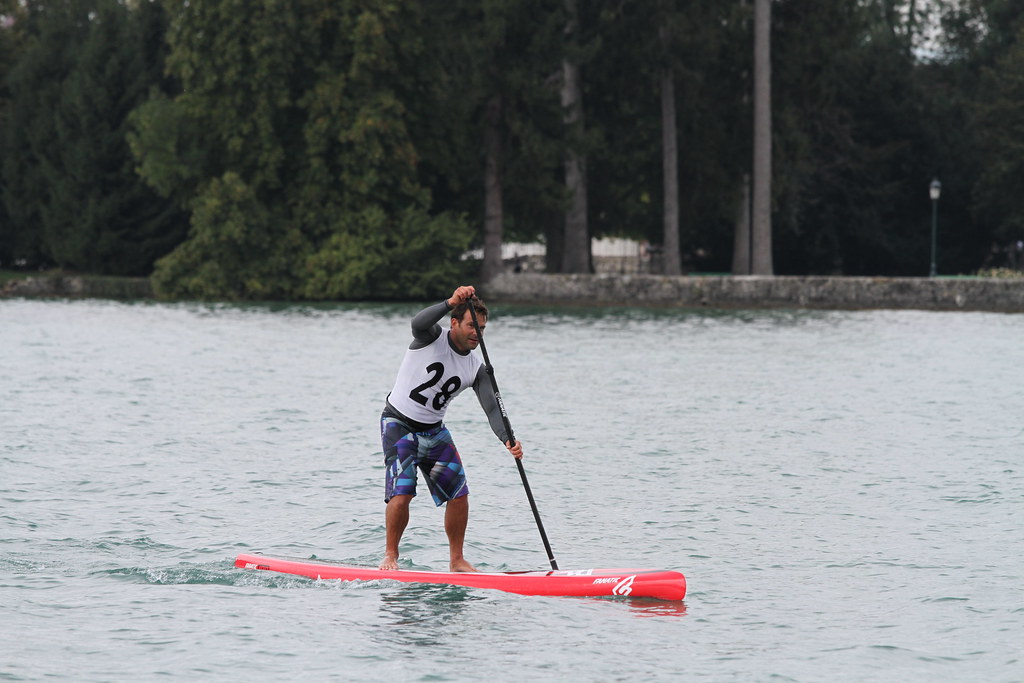
If you are already an experienced stand up paddler and want to try something new, you should try so-called race SUP. As with the wave SUP, a special board is also required for this, which in this case is designed for longer and more intensive tours. In the race SUP, the goal is clearly to maintain the highest speed possible for as long as possible. This increases the intensity of the workout very strongly.
In a race with a full load, calorie consumption increases to up to 700 to 1125 calories per hour.
Important:
If you want to perform race SUP more ambitiously, you need a special board and paddle which are fully designed for racing. This variant is therefore suitable for people who have already gained experience in stand up paddling and stand safely on the board, as the boards are much longer than all-round boards and therefore more difficult to control.
4. SUP Touring
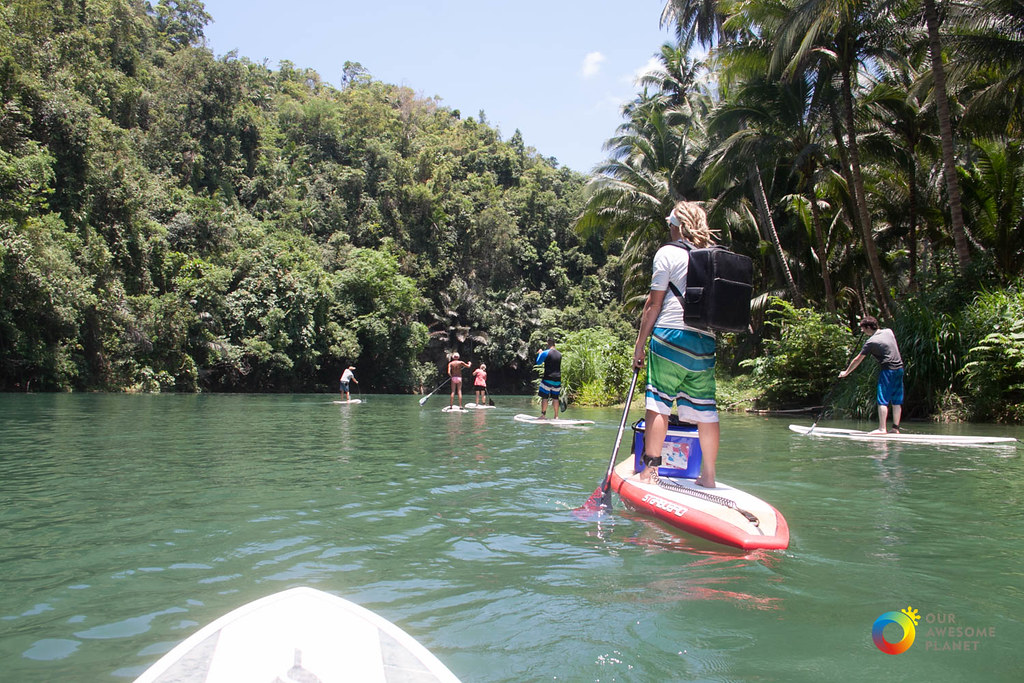
Touring SUP, as well as in downwinding and trekking SUP, involves comparatively long distances on the board. This also makes very high calorie consumption possible:
On a sporty SUP tour, about 615 to 710 calories are consumed per hour.
Since you are on the board for quite a long time with SUP touring and trekking, make sure that you determine the intensity according to your physical condition and your desired physical goal.
Good body feeling is important in order to be able to assess your performance well, even over long tours. But if you can paddle consistently at your performance limit, and that over a longer period of time, you can even achieve higher calorie consumption than stated here.
Every one of these SUP paddling variants is ideal for burning calories. In addition, they all provide a more effective full-body workout and are also a lot of fun. If you can’t decide, you should try each of the mentioned variants once to find the perfect workout for yourself. The only important thing is that you always use the right board for the respective variant. If you need a few tips, our Buyer’s Guide will certainly help you!
Summary and conclusion
Stand Up Paddling is well advised for every athlete who is looking for a healthy and effective full-body workout that promotes both stamina and strength. How high calorie consumption ultimately turns out depends on the one hand on the type of SUP and on the other hand on the intensity and duration of the respective unit.
But what we can promise in any case: From our point of view, it is certainly the fitness workout that offers the most fun!
The fact is, however, that this workout can address many muscle groups at the same time. In addition, you only paddle using your own body weight, which is a great advantage in contrast to a workout in the gym, because in this way your joints, tendons, and muscles are spared and painful injuries can be avoided.
If you have never stood on a SUP board before and basically like to enjoy nature and do physical activity, you should definitely try this sport to stay fit and burn calories!
Do you need more information?
If you need more information about SUP, how it works and the most important must-knowns about the equipment, check out the the following section of coolwatersports!
